CKLW – 93.9 FM – Charlie O’Brien – April 2, 1992.mp3
![]()
Scott Miller is currently at WOLX morning drive in Madison, Wisconsin.
Scott has been all over the place since 1974
These are all the station Scott has been at since the start in 1974.
CKNR – Elliot Lake
CJME – Regina
CKOM – Saskatoon
CFTR – Toronto
CKLW – Detroit / Windsor
WKSG – Detroit
WOMC – Detroit
WJMK – Chicago
WGRV / WMGC – Detroit
WSRZ – Sarasota
WRVR – Memphis
CFUN – Vancouver
WOLX – Madison (Current)
Voicetrack WKTK * Gaineville FL.
CKLW – Scott Miller – June 29, 1983.mp3
WOMC – Scott Miller – March 10, 1991.mp3
WOMC – Scott Miller (Part 2).mp3
WGRV – Scott Miller – 2001.mp3
![]()
FROM WKMH TO WKNR, FOUR-WAY BATTLE HEATS UP RADIO DIALS ACROSS DETROIT
DETROIT — A four-way battle is shaping up in this market with the immediate changeover in programming at WKMH.
The Dearborn-based 5,000 watter has introduced a new set of calls, WKNR, several new deejays, and a radical switch from the soft sound in music to a “30 plus 1” format. Detroit will be one of the few markets where severe competition is taking place among three or more pop music stations.

The Knorr-owned radio outlet has been under the programming consulting of Mike Joseph for many months. Soft standards have been the path for more than a year. WKMH (now WKNR) was once the major pop music outlet in the market. Today a major fight is now developing between the new WKNR, RKO radio’s 50,000 watter, CKLW, WJBK, Storer-owned “teen’s swinger” radio, and WXYZ, the ABC-owned pop-rater on the 1270 radio dial in Detroit. Recently CKLW had added Tom Clay in the afternoon-evening drive to help accentuate CKLW’s positive pop sound.
Mort Crowley, a KHJ defector, broadcasts 5 to 9 a.m., followed by the former-WKMH mainstay Robin Seymour in the 9 to 12 p.m. time slot. Jim Sanders is handling the noon to 3 p.m. shift, and Gary Stevens will be hosting the 3 to 7 p.m. segment. Bob Green will deejay from 7 to 12 a.m., while Bill Phillips will hold down the fort all night long until 5 a.m. END.
(Information and news source: Billboard; November 16, 1963).
![]()
BRITISH ARTISTS BEAMED OVER TO U.S. VIA CKLW
LONDON — The Animals, the Bachelors, the Nashville Teens, the Isley Brothers and Paul Jones, lead singer of the Manfred Mann group, recently took part in a unique broadcast from London to 26 States and much of Canada via transatlantic cable telephone.
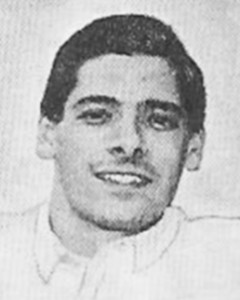
The program was the first from a series to be beamed by Britain’s leading “pirate” station Radio Caroline to CKLW, Detroit. The two stations are taking turns to phone a 30-minute show from each other’s country every week.
The British part is phoned from Caroline House in London and used in disc jockey Terry Knight’s CKLW four-hour radio show. Knight interviews all the artists in the British studio and later plays each artist’s their respective records. CKLW returns the same kind of material for similar use here. END.
(Information and news source: Billboard; November 28, 1964).
![]()
DETROIT’S NO. 1 DEEJAY DEBUTS NEW TEEN DANCE SHOW
DETROIT — “The Lively Spot,” hosted by CKLW deejay Tom Shannon, bowed here on CKLW-TV (channel 9) on Monday, September 30, replacing the Robin Seymour “Swingin’ Time” show. The show will be seen 3:30 to 4:30 p.m. Monday through Friday and 6 to 7 p.m. Saturday when it will be known as “The Tom Shannon Show.” He’ll continue his 6 to 9 p.m. on the CKLW radio station.
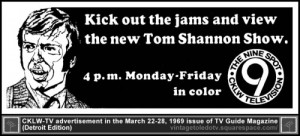
Elmer Jasper, director of programming for CKLW-TV, predicts Shannon will become a great favorite of Detroit young people on TV. Shannon joined CKLW four years ago. A song-writer, he wrote the 1963 hit, “Wild Weekend,” by the Rebel Rousers. He also wrote “Soul Clappin’,” a local hit currently playing in Detroit on the radio charts, as performed by the Buena Vistas on the Marquee record label. END.
(Information and news source: Billboard; October 5, 1968).
![]()
ARTIST CLAIMS CKLW’S KEEN INTEREST AFFECTS U.S. HITS IN POPULARITY AND IN SALES
By RITCHIE YORKE
TORONTO — The future evolution of Canadian-made music in the U.S. charts depends very much on a “continuing keen interest” by the programmers of Radio CKLW Windsor/Detroit, according to Edward Bear’s singer/writer, Larry Evoy.
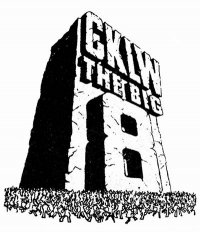 Evoy credits CKLW with being “directly responsible” for the massive American success of his “Last Song” single on Capitol.
Evoy credits CKLW with being “directly responsible” for the massive American success of his “Last Song” single on Capitol.
Since the introduction of Canadian content regulations on AM broadcasters in this country (January 18, 1971), CKLW has been required to devote 30 percent of its playlist to records with at least a minimum involvement of Canadiana.
Its Canadian location notwithstanding, CKLW caters primarily to an audience in excess to 90 percent Americans. It has been the top-rating teen station in Detroit for several years and also draws strong ratings in nearby cities such as Cleveland and Toledo.
CKLW is the only Canadian-owned station (TV or radio) with a significant U.S. audience. In addition, CKLW is widely regarded as one of the key breakout stations for new recorded hits in the United States. A recent Billboard survey revealed that more hit singles are broken from Detroit than any other major market in the country.
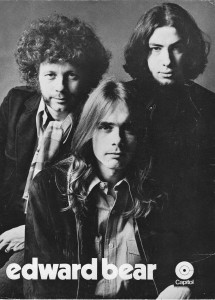
It comes as no surprise then that CKLW has become the prime access route for Canadian record makers anxious to get their vinyl recorded wares onto the U.S. charts. In the early part of the Cancon era (acronym; Canadian context), CKLW demonstrated considerable reluctance in programming legitimately locally-made singles. Rather, the station searched out U.S. records with dubious Canadian connections (many a song written by Paul Anka, who left Canada fifteen-years ago, have found their way onto the ‘CK playlists) to avoid taking a chance on unknown Canadian artists.
But in the past six months or so, CKLW has gotten behind real Canadian records with unprecedented vengeance. At the same time, the station continues to make rating gains destroying the myth that CKLW could not fairly compete in Detroit with the Cancon millstone around its neck.
Edward Bear’s Larry Evoy is one of several key Canadian artists now singing the praises of the new ‘CK policy. “It seems that CKLW now listens to Canadian records seriously,” Evoy says. “They merely don’t dismiss them as inferior.”
Real Ear
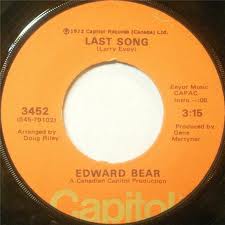
Evoy believes that CKLW music director Rosalie Trombley has a real ear for picking unproven hits. He cites the example of Skylark’s current U.S. top 10 hit, “Wildflower” as an example of this ability.
“I must say also, that she was tremendously important in breaking ‘Last Song.’ If it hadn’t been for her efforts, I doubt if we’d done anywhere near as well,” he said.
“Last Song” had sold some 1,250,000 copies in the U.S. and in excess of 100,000 in Canada, making it the biggest-selling domestically produced pop record ever on home soil.
The follow-up single “Close Your Eyes” was at No. 44 with a star on the Hot 100 last week. It moved from No. 24 to No. 20 at CKLW with top five requests reported. “Last Song” had previously reached the No. 1 spot at CKLW, becoming the first Canadian-made single to ever achieve that difficult feat in a predominately R&B market.
Evoy said he favors the CRTC Cancon laws, which made a record industry in Canada a reality. “I cannot see that the regulations have caused any hardship anywhere.”
Evoy also considers Canadian studios to be the equal of U.S. recording facilities. “I’m very high on the studios here. We cut both of our U.S. hits at Thunder Sound in Toronto. As far as sound goes, you can get what you want — it just depends on what you’re doing and who you’re doing it with.” END.
(Information and news source: Billboard; May 26, 1973).
![]()
Detroit and L.A. Record Sales Are ‘Happening Places’
By CLAUDE HALL
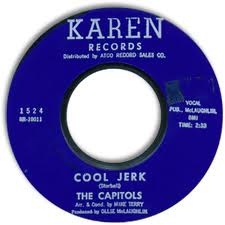
DETROIT — Detroit and Los Angeles are currently the best place in the nation in which to break a record. Both cities in the past six months, according to a special Billboard survey, have had eight records start there with a sales breakout, and have spread across the country to finally reach Billboard’s Top 100 Chart. In the case of Detroit, this include’s “Cool Jerk” by the Capitols on Karen Records, No. 7 this week, and “Oh, How Happy” by the Shades Of Blue on Impact Records which went to No. 12 and is No. 14 this week. Impact is a Detroit record label.
The eight-Detroit chart makers came from a total of 16 breakouts; the eight Los Angeles winners came from only 14. Chicago, New York and Detroit were the cities with the largest number of total breakouts — 16 each. But, of the New York and the Chicago breakouts, only six went on to reach the chart.
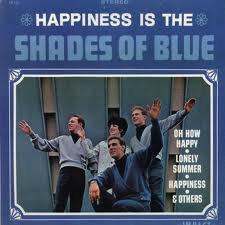
San Francisco, on the other hand, had seven records reach the chart from 15 original breakouts. San Francisco had the largest number of total breakouts — 20 — but five of these records happened first in other markets. Tying with New York and Chicago in number of breakout records that went on to reach the chart were Dallas, Miami and Pittsburgh.
In a similar survey last year, New York took all honors, not only having the most original breakouts — 17 — but having the most that reached the chart — 19. San Francisco had been second with 18 breakout that reached the chart. That survey encompassed nine months.
During the past six months, Atlanta had five record breakouts that reached the chart, Houston four, Milwaukee and St. Louis three each.
In all, there were 182 different records which were listed as breakout singles in 22 different markets between Billboard’s January 1 and June 25 issues. Of these, 81 had made the Top 100 Chart as of the current July 2 issue, another 26 record singles made the Bubbling Under category. The percent of of breakout single records making the chart was 45.1.
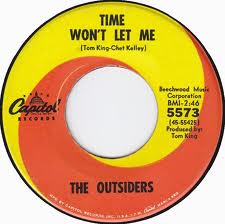
These figures do not include the big name artists like the Beatles, whose records generally break nation-wide immediately after release. Of the breakout singles, the two biggest hits to date have been “Elusive Butterfly” by Bob Lind on World Pacific Records, which started in Miami, and “Time Won’t Let Me” by the Outsiders on Capitol Records which started in Cleveland. Both records went to No. 5 on the chart. However, other records still moving up the chart like “Little Girl” (a San Francisco happening) by the Syndicate Of Sound on Bell Records, “Ain’t Too Proud To Beg” (Miami breakout) by the Temptations on Gordy Records, “Dirty Water” (a Miami breakout) by the Standells, on Tower Records, “Along Comes Mary” by the Association on Valiant Records (a Los Angeles breakout) still stand an excellent chance of doing as well on the charts. All four of these former regional breakouts are in Billboard’s top 20 with a star, indicating heavy current record disk sales.
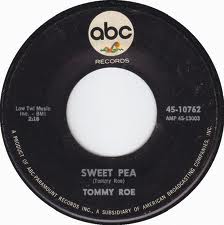
Without doubt, the crown for taking the longest to happen goes to “Sweet Pea” by Tommy Roe on ABC Records, appearing this week on Billboard’s Hot 100 chart at 37 with a star. The record was first listed as a breakout in Atlanta in the February 19 issue. More than two months later, in the April 30 issue, it was a breakout in Miami. The May 21 issue showed it as a sales breakout in both the Dallas-Ft.Worth area and in Memphis as well. On June 4, it was a breakout in both Milwaukee and the Minneapolis-St. Paul area. All this before “Sweet Pea” finally began to happen big.
Some records, in spite of being sales breakouts in other markets, never really make it. “Second Hand Man” by the Back Porch Majority on Epic Records had sales breakouts in Houston, Dallas-Ft. Worth and Chicago, but only went as high as No. 135 in the Bubbling Under category. “Don’t Stop Now” by Eddie Holman on Parkway Records broke out in sales in Los Angeles, New York and Pittsburgh, but failed to make it elsewhere in other major markets. “Mr. Moon” by the Coachmen on Bear Records broke in Minneapolis-St. Paul, Milwaukee and San Francisco but only went high as No. 114 in the Bubbling Under category. “I Dig You Baby” by Lorraine Ellison on Mercury Records had the same fate.
Some markets didn’t fare so well in ratio of success with breakouts. Although a total of 15 different records had sales breakouts in Baltimore — 13 of which happened there first — only two went on to make the 100 chart, one an Al Martino record which went as high as No. 30. END.
(Information and news source; Billboard Magazine; July 2, 1966).
![]()